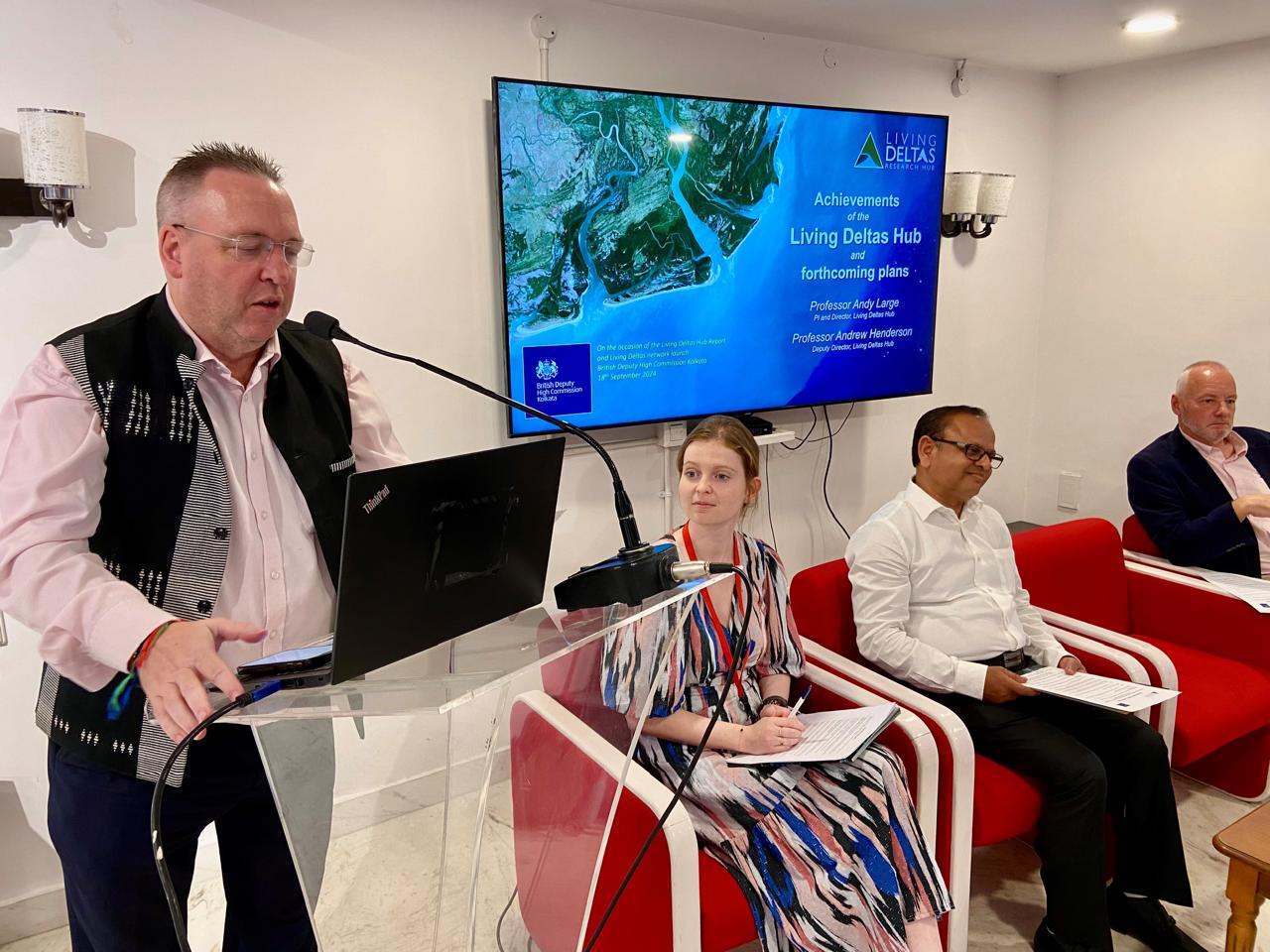The UK and the Government of West Bengal jointly launched the 5-year report of the UKRI (UK Research and Innovation) GCRF (Global Challenges Research Fund) Living Deltas Hub at an event in Kolkata recently.
Dr Andrew Fleming, British Deputy High Commissioner to East and North East India, Mr Barun K Ray, Additional Chief Secretary, Minister for Non-conventional and Renewable Energy Sources, Government of West Bengal, Ms Rebecca Berry, Second Secretary, Climate and Energy Team, British High Commission, New Delhi launched the report.
The UKRI GCRF Living Deltas Hub has been working in the Ganges-Brahmaputra-Meghna Delta in West Bengal and Bangladesh as well as the Red River and Mekong River deltas in Vietnam since February 2019.
The Hub (www.livingdeltas.org), led by Newcastle University, UK, brings together 22 Research Organisations from across the world to safeguard delta futures through more resilient communities and sustainable development and, at its peak, had 130 researchers and over 200 people associated directly with the project. 65 of these were early career researchers and, so, represent the next generation of deltas researchers.
Dr Andrew Fleming, British Deputy High Commissioner to East and Northeast India said: “The event highlights the critical UK-India collaboration in addressing the pressing challenges of climate change and biodiversity conservation in delta regions. It is wonderful to see the culmination of extensive collaborative research work done by Newcastle and Northumbria Universities in the UK with universities here for five years. We want to build on it. By working together, we are fostering sustainable livelihoods for vulnerable communities, particularly in the Sundarbans, and ensuring resilient futures for generations to come.”
Professor Andy Large, University of Newcastle, UK said: “The urgent need for the Hub has been clear, as human impacts on deltas increase, the necessity of sustainable development strategies underpinned by locally rooted knowledge becomes ever greater.”
In presenting the key findings and evidence from the Living Deltas Hub’s activities in India, Bangladesh and Vietnam, Professors Andy Large, Andrew Henderson, and Professor Matt Baillie Smith highlighted how these river deltas comprise 1% of global landscapes yet support over half a billion people worldwide. These mega-deltas are vital social-ecological systems and global food-baskets, but the landscapes and the livelihoods of those who rely on them are under huge threat from human exploitation and environmental degradation. Due to their low-lying nature, deltas are among the most vulnerable of the world’s landscapes to the ‘wicked multiplier’ effect of climate change. Focusing on these three deltas, the Living Deltas Hub has pioneered a model of equitable partnership between delta-dwellers and the research community.
The Hub’s outcomes and evidence building fall into key areas:
Ecosystem Conservation, Restoration and Protection.
Disaster Risk Reduction and Management.
Livelihood Diversification and Adaptation.
Capacity Strengthening of Delta. Communities towards resilience and well-being.
For ecosystem conservation, restoration, and protection ecosystems in India, the Living Deltas Hub has – for the first time:
(a) Implemented novel monitoring techniques to assess tidal dynamics in mangroves – vital information to underpin mangrove restoration essential to buffering future sea level rise.
(b) Established new water quality monitoring networks across the previously unmonitored Ganges-Brahmaputra-Meghna delta in West Bengal.
(c) Pioneered the use of lake sediments to quantify aquatic ecosystem responses to human impact over time.
For disaster risk reduction and management, the Living Deltas Hub has:
(a) Integrated indicators typically used to characterise the dimensions of risk to natural hazards with sustainability indicators emanating from the Sustainable Development Goals to address combined disaster risk reduction and sustainable development objectives.
(b) Evidenced that maintaining existing embankments bring more benefits than raising embankment height, and that a combination of coastal afforestation with well-maintained embankments constitutes an effective hybrid solution to reduce impacts from storm surges on embankments.
(With inputs from BDHC)

